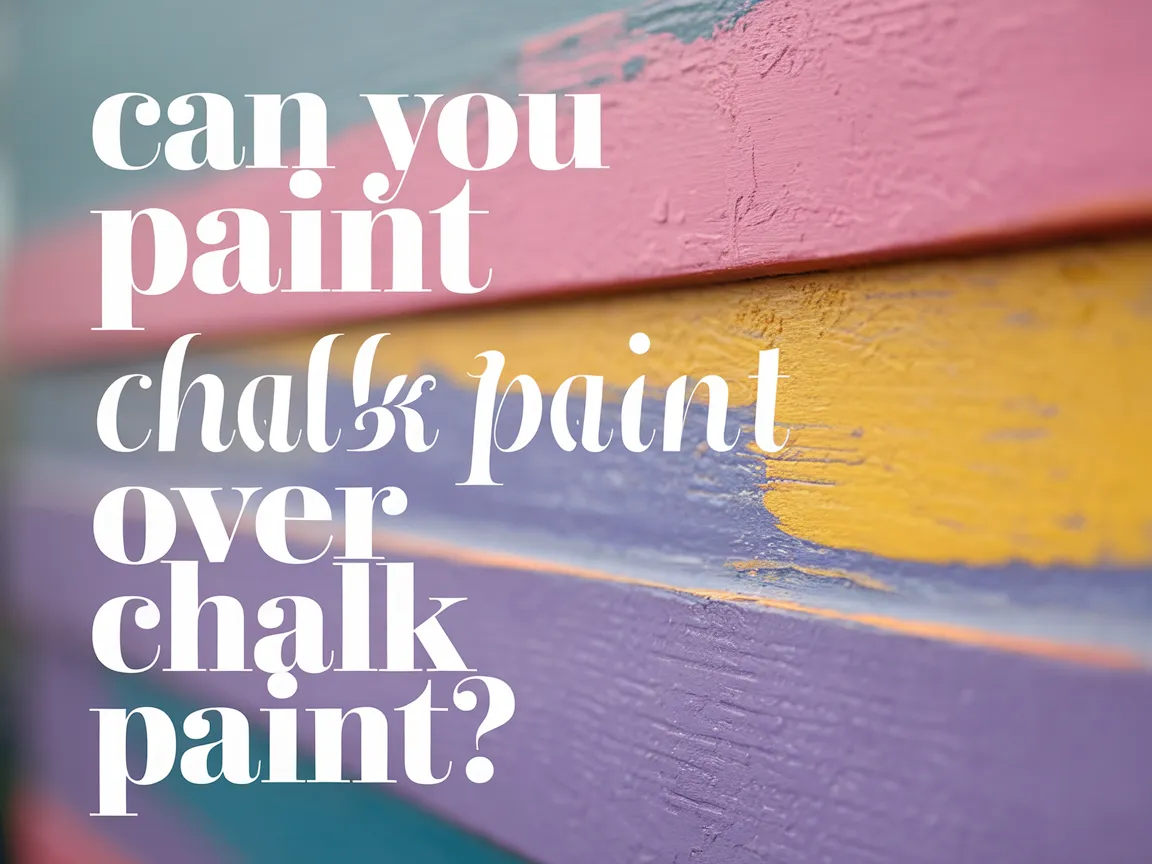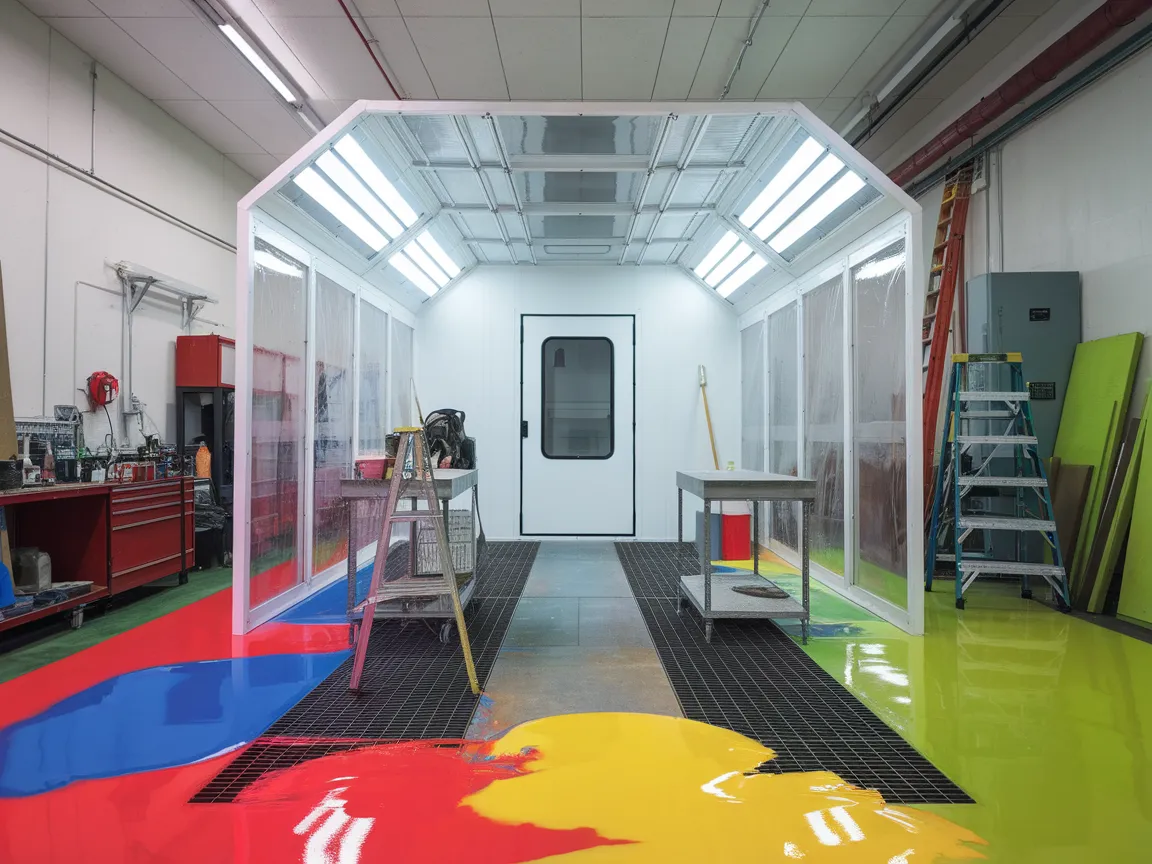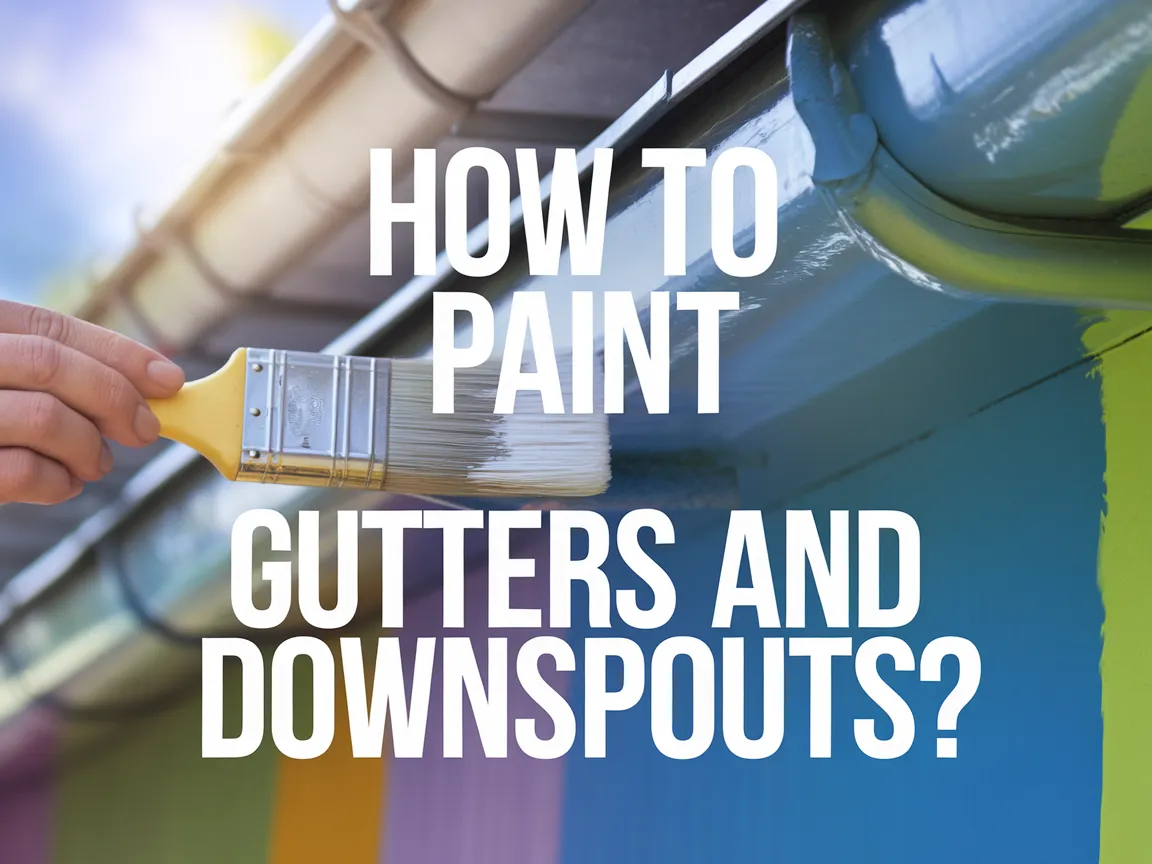Can You Paint Composite Deck Boards?
Published on: February 27, 2025 | Last Updated: January 7, 2025
Written By: Sarah McClintock
Composite deck boards are like magic wood. They’re made from a mix of wood fibers and plastic, making them strong and colorful.
So, can you paint composite deck boards? It’s crucial to know this before diving into your deck painting project. From my experience, I found that painting these boards isn’t as simple as it sounds. You need the right tools and techniques to keep your deck looking great.
In this article, we’ll explore essential preparations before painting, steps to get it done, color recommendations, types of composite deck boards, factors that affect the painting, common issues, finishing touches, and creative DIY ideas. Plus, we’ll tackle FAQs about painting composite deck boards and discuss how to remove paint from a wood deck if needed.
Contents
- 1 Can You Paint Composite Deck Boards?
- 2 What Are Composite Deck Boards?
- 3 Essential Preparations Before You Start Painting
- 4 Step-by-step Process for Painting Composite Deck Boards
- 5 Types Of Composite Deck Boards and Their Compatibility With Paint
- 6 Factors Affecting the Painting Of Composite Deck Boards
- 7 Common Issues When Painting Composite Deck Boards
- 8 Finishing Touches to Enhance Your Painted Composite Deck
- 9 Maintenance Tips for Painted Composite Deck Boards
- 10 Understanding the Lifespan of Painted Composite Deck Boards
- 11 Price Breakdown: Painting Composite Deck Boards
- 12 Best Practices for Applying Paint on Composite Deck Boards
- 13 Environmental Impact Considerations When Painting Composite Deck Boards
- 14 Frequently Asked Questions About Painting Composite Deck Boards
- 15 Conclusion
- 16 Useful Resources
Can You Paint Composite Deck Boards?
Sure, you can paint composite deck boards, but it’s not always the best idea. Use high-quality paint made for composites, and remember to prep the surface well for better adhesion. It may also need reapplication every few years. If you’re wondering about paint compatibility and techniques, painting surface guidelines can provide additional technical insights.
The Finishing Touch
A freshly painted wall is a blank canvas. The best way to bring your room to life is with a single piece of statement art that ties everything together.
Browse Wall Art at Big Wall DecorWhat Are Composite Deck Boards?
Composite deck boards are engineered materials made from a blend of wood fibers and plastic. They typically consist of about 50% wood and 50% plastic, offering durability and resistance to warping. On average, they last over 25 years with minimal maintenance, which is impressive compared to traditional wood decks that may require annual sealing and painting. If you’re curious about mixing different paint types for deck maintenance, paint compatibility becomes crucial.
Can you paint composite deck boards? From experience, I thought it’d be easy to revive an old deck, but I faced unexpected challenges!
I once used composite decking for a patio renovation. The boards were incredibly strong, but I soon realized how tricky they are with tasks like paint stripping and touch-ups. While I was figuring out how to remove old paint from my deck exterior maintenance, I found that handling this can complicate any building process, especially with composites that don’t absorb paint like wood. If you’re curious about painting techniques for different materials, painting methods can vary widely.
Essential Preparations Before You Start Painting
What do you need to prepare for?
- Deck Cleaner: Use a cleaner like Zinsser’s Jomax or Thompson’s WaterSeal. It’s crucial for removing dirt and mildew from composite deck boards.
- Sandpaper or Deck Scraper: You’ll need 80-grit sandpaper or a scraper like the Irwin Strait-Line. This helps smooth rough spots on the surface before painting.
- Primer: Use a product like KILZ Premium Primer. A good primer is essential for better paint adhesion (Sticking) on composite materials.
- Paint Sprayer or Brush: Choose a sprayer like Graco TrueCoat or a quality brush like Purdy; these provide an even paint application.
- Drop Cloth: Get a durable drop cloth, such as COVERVA, to protect the area around your deck from spills and splatters.
That covers key preparations before painting. Let’s now take a look at the step-by-step process for painting composite deck boards.
Also See: What is Paint Protection Film? Protects Your Vehicle
The Finishing Touch
A freshly painted wall is a blank canvas. The best way to bring your room to life is with a single piece of statement art that ties everything together.
Browse Wall Art at Big Wall Decor
Step-by-step Process for Painting Composite Deck Boards
Now, we’ll cover the steps to paint your composite deck boards effectively. Follow each one carefully for the best results.
-
Clean the Deck Surface Thoroughly
Start by sweeping away dirt and debris from the deck. Use a pressure washer (Around 2,700 Psi) or a deck cleaner to remove stubborn stains and mildew.
Allow the surface to dry completely, ideally 24-48 hours, to ensure proper paint adhesion.
-
Apply a Primer Suitable for Composite Materials
Choose a bonding primer designed for synthetic surfaces. This step is crucial; it ensures the paint adheres since composites can be slick.
Apply the primer evenly and let it dry according to the manufacturer’s instructions, typically around 1-2 hours before painting.
-
Select and Apply the Right Paint
I recommend using acrylic latex paint specifically designed for outdoor use. Apply it with a paint sprayer or roller for an even coat, and use thin layers to prevent drips.
You’ll typically need at least two coats, allowing 4-8 hours between applications to dry completely. Quality paint lasts longer, so don’t skimp.
-
Finishing Up and Allowing the Paint to Cure
After your final coat, let it cure. Avoid foot traffic for at least 24-48 hours, depending on humidity and temperature.
For best durability, avoid heavy furniture for 2-3 weeks to let the paint breathe and properly set.
So far we covered the step-by-step process for painting composite deck boards. Let’s look at types of composite deck boards next.
Types Of Composite Deck Boards and Their Compatibility With Paint
Let’s discuss the types of composite deck boards: capped, uncapped, wood-plastic composites, and PVC.
-
Capped Composite Deck Boards
Capped composite boards have a protective layer that resists moisture and UV light. They’re mainly made of wood fibers and plastic. You can paint these, but choose a paint designed for plastic surfaces to prevent peeling over time. If you’re looking for specific techniques on applying spray paint to composite materials, spray painting techniques can help.
-
Uncapped Composite Deck Boards
Uncapped boards are pure wood-plastic composites without a protective layer. They’re more absorbent, and painting them can cause damage and quicker wear. If you paint, use high-quality exterior paint for better durability. When working with these surfaces, you might want to explore thickening paint techniques to improve application.
-
Wood-plastic Composites
These boards combine wood with plastic, creating a durable option. They’re usually lightweight and easy to handle. You can paint these, but expect to reapply more often than capped boards due to their absorbent nature. If you’re looking to refresh your surface, painting composite materials requires specific techniques.
-
PVC Deck Boards
PVC boards are fully plastic and don’t absorb water. You can’t easily paint them; if you try, the paint may not stick. For better results, use a stain designed for PVC.
From my personal experience, I’ve had good luck with capped composite boards. The paint’s longevity really surprised me!
You should now have a good understanding of composite deck board types and their paint compatibility. In the next part, we’ll discuss factors influencing painting composite boards.
Factors Affecting the Painting Of Composite Deck Boards
What factors influence your ability to paint deck boards effectively?
-
Material Composition: Different composites absorb or repel paint, affecting adhesion.
-
Surface Texture: Smooth surfaces require special primers; otherwise, the paint may peel off quickly.
-
Weather Conditions: Painting in humid or wet conditions results in longer drying times and poor outcomes.
-
Previous Treatments: Remove old paints or stains for new layers to adhere properly; otherwise, they’ll fail.
That covers the elements influencing the painting of composite deck boards. Let’s now take a look at common problems encountered when painting.

Common Issues When Painting Composite Deck Boards
My friend tried painting her composite deck boards but faced major peeling issues. The paint didn’t bond well because composite materials contain plastics.
To fix this, she should use a primer designed for composites, typically formulated with a pour rate of 5-10 mL/m² (Milliliters Per Square Meter). Scrubbing the surface before application improves adhesion! If you’re curious about alternative painting techniques, you might want to explore spray painting automotive surfaces.
Finishing Touches to Enhance Your Painted Composite Deck
After painting your composite deck boards, apply a UV protectant every 3-4 months to shield against sunlight (Don’t Skimp!). Clean with a pH-neutral cleaner twice a year for longevity.
Inspect joints and seams for cracks over 2 cm (0.79 In) wide, as this invites moisture. Use a sealer like WaterShield for any structural gaps to prevent water intrusion.
The Finishing Touch
A freshly painted wall is a blank canvas. The best way to bring your room to life is with a single piece of statement art that ties everything together.
Browse Wall Art at Big Wall DecorI recommend sanding the board edges lightly every 6 months to refresh the paint bond. This boosts adhesion (Stickiness) and makes maintenance easier in the long run.
Maintenance Tips for Painted Composite Deck Boards
Keeping your newly painted composite deck boards in top shape is key to longevity!
-
Regular Cleaning
Clean the surface regularly with a mild cleaner, using a soft broom or mop. Aim to do this every 2-3 months.
-
Inspect for Damage
Check for wear, peeling, or cracks at least every 6 months. Early detection saves time and effort!
-
Reapply Protective Coatings
Apply a UV protectant every 6 months, especially if you’re in a sunny region. It prevents fading!
Understanding the Lifespan of Painted Composite Deck Boards
How long can you expect your paint job to last on composite deck boards?
| Paint Type | Average Lifespan (Years) | Reapplication Frequency | Durability Factors |
|---|---|---|---|
| Acrylic Latex | 5-10 years | Every 5-7 years | Sun Exposure, Foot Traffic |
| Alkyd-Based | 7-10 years | Every 7-10 years | Moisture, Environment |
| Eco-Friendly | 3-5 years | Every 3-5 years | Humidity, Temperature |
Price Breakdown: Painting Composite Deck Boards
Let’s talk numbers! What’s it really gonna cost to paint your composite deck boards?
| Item | Estimated Cost (USD) | Notes |
|---|---|---|
| Deck Cleaner | $15-$30 | Varies by brand |
| Primer | $25-$50 | 1 gallon typically covers 200-300 ft² (18.58-27.87 m²) |
| Paint | $30-$60 | Quality matters! |
| Tools (Brush/Sprayer) | $20-$70 | One-time investment |
| Total Estimated Cost | $90-$210 | Depending on deck size and choices |
Best Practices for Applying Paint on Composite Deck Boards
Want to ensure your paint goes on smoothly? Here are a few best practices to follow:
- Test Patch First: Always do a small test area to check paint adhesion and finish.
- Follow Manufacturer’s Instructions: Each product’s drying and curing times can vary.
- Apply in Optimal Conditions: Ideal temperature is around 70°F (21°C) with moderate humidity for best results.
Environmental Impact Considerations When Painting Composite Deck Boards
Curious about how your painting choices impact the environment? Let’s dive in!
| Factor | Description | Recommendation |
|---|---|---|
| Type of Paint | Low-VOC (Volatile Organic Compounds) paints minimize harmful emissions when applied. | Choose paints with < 50 g/L (grams per liter) VOCs. |
| Disposal Methods | Improper disposal of old paint can pollute landfills and waterways. | Look for local paint recycling programs for safe disposal. |
| Surface Preparation | Using chemical strippers or harsh cleaners can affect the surrounding environment. | Opt for eco-friendly cleaners to limit environmental impact. |
Frequently Asked Questions About Painting Composite Deck Boards
Can Regular Paint Be Used on Composite Deck Boards?
No, regular paint can’t be used on composite deck boards; it’s best to use paint specifically designed for composites. Standard paints won’t adhere properly and can lead to peeling or damage over time.
How Long Does Painted Composite Decking Last?
Painted composite decking can last 5 to 10 years with proper care and quality paint. The type of paint, climate, and maintenance all significantly affect longevity.
Is It Necessary to Prime Composite Deck Boards Before Painting?
Yes, it’s necessary to prime composite deck boards before painting. Primer enhances adhesion, preventing paint from peeling, and helps achieve an even finish.
What Should I Do if the Paint Starts to Peel?
If the paint starts to peel, you should remove the loose paint with a scraper or pressure washer. Addressing this promptly prevents further damage and ensures your deck looks great.
Can I Paint My Composite Deck a Lighter Color?
Yes, you can paint your composite deck a lighter color. Just be sure to use high-quality exterior paint, as lighter hues may require additional coats for full coverage.
How Often Should I Repaint My Composite Deck?
You should repaint your composite deck every 5 to 10 years, depending on wear and exposure. Regular inspection can help you maintain its appearance and longevity.
How Can I Remove Old Paint From My Composite Deck?
You can remove old paint from your composite deck using a paint stripper or a pressure washer. Choose a method that won’t damage the deck surface or underlying structure.
Also See: Can You Paint Trex Boards? Learn How to Do It!
Conclusion
Phew, that’s a lot to digest! We covered what composite deck boards are, essential preparations before painting, a step-by-step painting process, a recommended color palette, types of boards and their compatibility with paint, factors affecting painting, common issues you might face, finishing touches, and even some creative DIY ideas.
In simple terms, yes, you can paint composite deck boards, but it requires the right preparations and knowledge of compatibility. Just remember, successful painting hinges on using the right type of paint and proper preparation methods to avoid common pitfalls.
For further insights and comprehensive guides, visit Paint Answers.
Useful Resources
- Smith, R. (2003). The Artist’s Handbook of Materials and Techniques (5th ed.). New York, NY: Knopf.
- Can You Paint Trex or Composite Decking?
- Can You Paint Composite Decking? | Hunker









